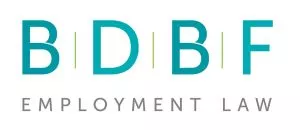Equal Pay Day is a national campaign led by the Fawcett Society, a charity campaigning for gender equality and women's rights at work, at home and in public life in the UK. It marks the day in the year when, based on the gender pay gap, women in the UK stop being paid compared to men – or, to put it a different way: women work for free for the last 40 days of the year.
The gender pay gap is the difference between the average pay of men and women within a particular group or population. The Fawcett Society uses the mean, full-time, hourly gender pay gap for the UK to calculate the gender pay gap for Equal Pay Day which this year they calculate to be 10.7%, a tiny improvement from 10.9% last year.
The pay gap between men and women depends to a large degree on the sector and type of work being performed. For example, the gender pay gap for barristers and judges is much higher than the average at 29.1% and for carers it is much lower at 0.7% (ONS 2023 figures).
Gender pay gap data from the Office for National Statistics for 2023 includes the following highlights:
- The median gender pay gap has declined slowly over time; and in April 2023 it stood at 7.7% for full-time employees.
- There remains a large difference in the gender pay gap between employees aged 40 years and over and those aged under 40 years. For groups aged under 40 years, the gender pay gap for full-time employees is 4.7% or below. However, for those aged 40 to 49 years and older, the gender pay gap for full-time employees is much higher, at 10.3% or higher.
- Compared with lower-paid employees, the gender pay gap among higher earners is much larger, however this difference has decreased in recent years.
- Fewer women in their 40s and 50s are in occupations such as managers, directors and senior officials, at an age when pay for these occupations typically increases.
So more than 50 years after equal pay legislation was first introduced in the UK, what is being done to address the ongoing gender pay gap?
Transparency
Back in March 2022 the Minister for Women launched a pilot scheme to mark International Women's Day, which sought to use pay transparency measures to tackle pay inequality. The scheme asked participating employers to include information about salary details in their job adverts and refrain from asking candidates to disclose salary history during the recruitment process. The aim of such measures is to be clear about the pay scale for the role and avoid perpetuating historic unequal pay between men and women.
It is a helpful starting point to tackle the issue of pay inequality at the point of recruitment, but we are yet to fully understand the outcome of the trial. Further, it is ultimately just a pilot scheme so of limited impact. Legislation along these lines would be needed for such measures to have a wider and more permanent effect.
In addition, transparency at the point of recruitment is not enough – measures such as transparent pay structures and awards, promotion processes and regular equal pay audits would be required to ensure there is transparency throughout the pay scale.
Gender pay gap reporting
Gender pay gap reporting for employers with 250 or more employees was first introduced in the UK in 2017.
Reporting on its own does not seem to be making serious inroads into the gender pay gap of individual organisations. When the rules were introduced in 2017, it was assumed that the mantra of "what gets measured get managed" would be enough to encourage action to close pay gaps. Reporting has certainly shone a light on the problem and has resulted in the naming and shaming of those organisations with a very significant gap. However, the rules do not require employers to publish action plans to close their gap, let alone implement measures in practice. Many campaigners argue that the time has come to revise the rules to require employers to devise action plans to close the gap, implement those measures and report on outcomes. The Labour Party's New Deal for Working People (published on 12 September 2023) states that, if elected, Labour will enforce the requirement to report and eliminate pay gaps, with employers required to devise and implement plans to eradicate these inequalities.
Positive action
Factors contributing to the gender pay gap include occupational segregation and the fact that fewer women progress to the most senior roles in many organisations. To be empowered to take action to address this, employers need to understand what tools they can lawfully use. Here, it is imperative that employers understand what is permitted under the positive action provisions (s.157 and s.158 Equality Act) and when action will tip into unlawful positive discrimination.
Earlier this year, the Government published new guidance on positive action which is helpful, although understanding by employers on how the rules work and what is and is not permitted is still relatively low. For example, an inquiry found that RAF recruitment policies designed to boost diversity by fast-tracking ethnic minority and female recruits, discriminated against at least 31 men. Incorrect legal advice was said to be the reason for the campaign, which was intended to be positive action but, in fact, amounted to unlawful discrimination.Clearly, more upskilling needs to be done.
Support for women of different ages and life stages
The ONS figures referenced above show that the gender pay gap is widest for women over 50. The gender pay gap increases once a woman becomes a mum. And older women take a financial hit for balancing work alongside caring for older relatives as well as children and grandchildren.
In April 2022 the Fawcett Society published the results of what is believed to be the largest survey of menopausal women in the UK. The survey was commissioned by Channel 4 and sought the views of over 4,000 women aged between 45 and 55. According to the Fawcett Society's report, one in ten women have left a job due to their symptoms and 44% of women said that their ability to do their job had been affected by their symptoms. The Fawcett Society has called for there to be a requirement for employers to put in place gender pay gap action plans informed by guidance which makes it clear that actions to support women with the menopause are key to closing the gap.
For example, employers could:
- Offer better flexible working and parental leave options for all, to help counter the "motherhood penalty" suffered by mothers as a result of having primary responsibility for childcare.
- Take steps to attract and retain older women in senior positions. This should include measures to support women through the menopause, which typically occurs around the age of 50. In February 2023, the Labour Party announced plans aimed at supporting women's wellbeing at work, particularly surrounding menopause.
- Put in place measures to support those who care for elderly or disabled relatives. This could include an obligation to offer flexible working options to carers and a mix of paid and unpaid carer's leave. Currently. there is a statutory right to one week's unpaid carer's leave only and no right to take unpaid leave for any longer.
Take an intersectional approach
The biggest factor contributing to the "motherhood pay penalty" is reduction in hours worked. A report published by the Fawcett Society this year showed that that the options for picking up more hours after having children are limited for Black and minoritised women because of the dual impacts of sexism and racism, with many dropping out of the workforce entirely. It found that:
- The employment rate of white mothers is 5 percentage points lower than that of white women without children, whilst women of Indian, Black African and Chinese heritage see penalties of up to 11 percentage pointscompared with women without children of their own ethnicities.
- 38% of mothers of Pakistani and Bangladeshi heritage are employed, compared with 55% of all women in the same ethnic group. This 17-percentage point employment gap is the highest of all the ethnicities.
The Fawcett Society has called for mandatory ethnicity pay gap reporting, in addition to gender pay gap reporting, as one measure to address this. To date, the Government has declined to introduce mandatory ethnicity pay gap reporting. However, voluntary reporting is encouraged and new guidance has been published to support employers to do this.
Equal pay litigation
Equal pay litigation remains one method of seeking redress for pay inequality. However, it is complex, takes time and is expensive – a daunting prospect for most individuals. Typically, equal pay litigation tends to be the reserve of large group claims against large public and private sector organisations such as local councils (e.g. Glasgow and Birmingham) and supermarkets (e.g. Asda, Tesco, Morrisons, Sainsbury's).
However, one stand-out individual equal pay claim was the case of Macken v BNP Paribas London Branch. In 2022, the employment tribunal ordered BNP Paribas London Branch to pay £2,081,449.70 to Ms Macken in compensation for her claims for equal pay, direct sex discrimination and victimisation (£401,797 for the equal pay claim). Importantly, the Tribunal also made the first ever order for an employer to conduct an equal pay audit and publish it on its website. In making the order, the Tribunal criticised the Bank's opaque pay system and the inadequate approach taken towards reviewing pay inequality in the past (including, for example, that such reviews excluded bonus awards). The audit has now been published and includes a 12-point equal pay action plan which the Bank must implement.
Equal pay claims can shift the dial on pay inequality for a particular workplace or a group of workers.
Look to Europe?
On 17 May 2023, the EU's new Pay Transparency Directive was published. Member states will have to implement it by 7 June 2026.
The Directive will require organisations to report six gender pay gap statistics. However, the Directive's requirements are much more stringent than the gender pay reporting obligations in the UK. Employers with 100+ employees (rather than 250+) will need to analyse gender pay gaps within different categories of employees. Where the gap is greater than 5%, the employer must conduct a "joint pay assessment" covering their whole workforce. This is essentially an equal pay audit. Employee representatives will have the right to question the methodologies used in the analysis and ask questions about the causes of the gaps. Member states will also be required to put in place penalties for employers that break the rules and workers who have suffered gender pay discrimination can claim compensation.
Therefore, the Directive takes a more proactive approach towards addressing gender pay gaps, compared to the current UK obligation to simply report the data. The risk is that the UK will fall behind the EU in this area.
Final thoughts
On Equal Pay Day 2023, why not think about what concrete steps your organisation can take to promote pay equity in your workplace?
The content of this article is intended to provide a general guide to the subject matter. Specialist advice should be sought about your specific circumstances.

